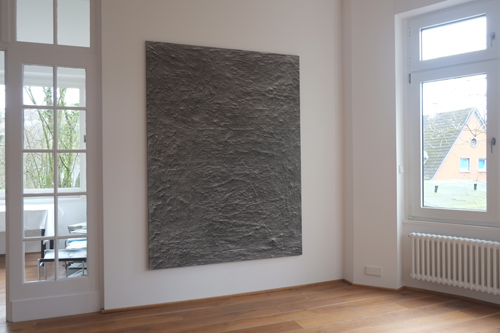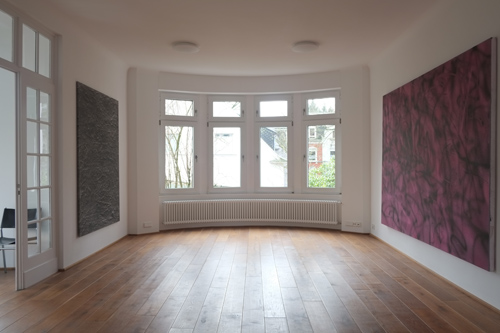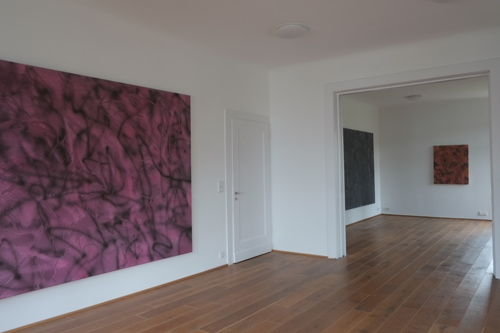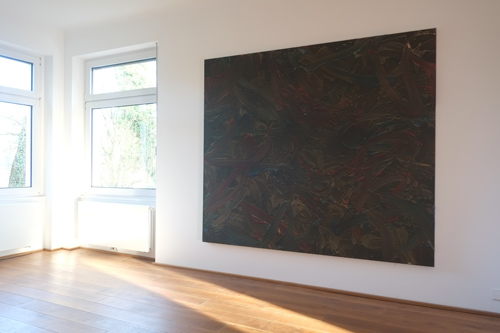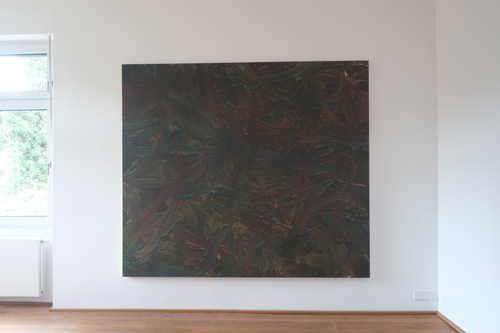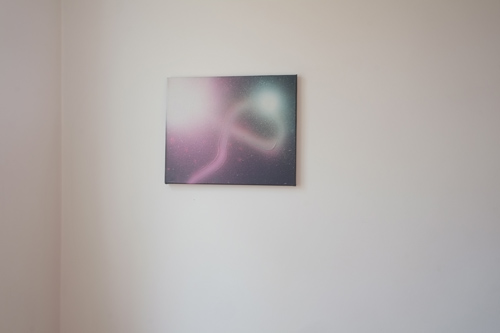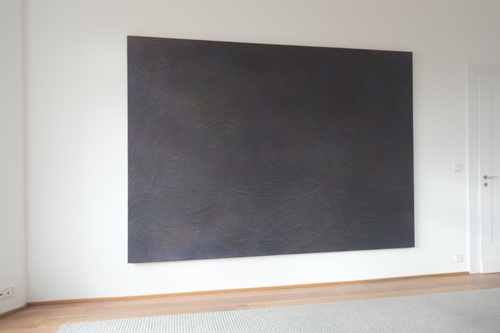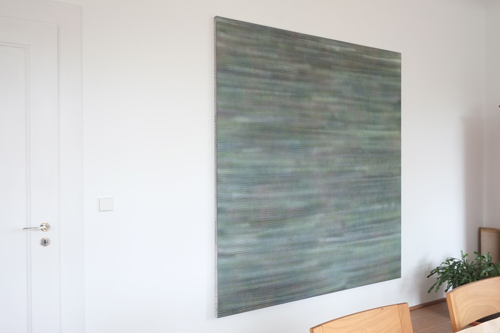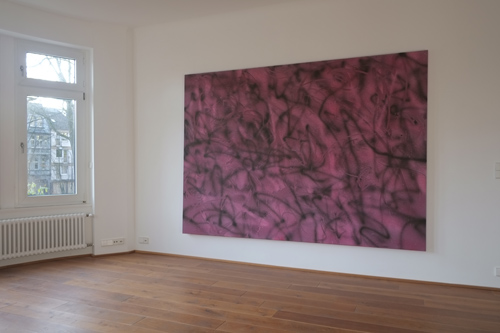Moritz Neuhoff
September 4 – October 13, 2017
Pink rain that moistens a wall marked with black graffiti traces—can one imagine that? Rain that doesn’t just run from top to bottom, but moves in all directions at once, as if it were made of the foaming spray of a waterfall lit from behind? The large paintings of Berlin-based artist Moritz Neuhoff are indeed made of painted color, yet when we look at them, we have absolutely no idea how they might have been created. They present visual events of something that appears to be mere matter, yet at the same time seems animated and in constant motion. At times, the impression of dead matter dominates, matter released from its rigidity by invisible natural forces; at other times, it appears to be living matter, revealing a glimpse of its internal biological pulsation: imagine looking through an electron microscope. The world’s color may be switched off, but through the immense magnification, surface layers of cell walls become visible, their biological activity, their life, becomes perceptible through their pulsing oscillation.
What would it look like if we could see the inside of a brain, with its reddish entanglements, overlaps, and connections of individual nerve cells? Or if we were to gaze from a bird’s-eye view at a vast body of water whipped by wind at dusk, its wave crests dancing in different directions in a variety of colors? Or if we caught sight of an old gray rock formation, beginning to soften in anticipation of a landslide, as water masses begin to seep out from behind? Or imagine racing through a sunlit landscape on a high-speed train—so fast that details blur into a trembling vision of delicate greens, blues, and yellows shimmering in bright light?
We can experience all of this while looking at Moritz Neuhoff’s paintings—and yet none of it is depicted. His works are pure painting—highly complex—and even seasoned painting experts are left guessing how they are made. Neuhoff employs not only classical techniques but draws on every possibility available to a contemporary painter after the revolution of abstract painting: dripping, wiping, bursting, running, spraying, foaming color. His aim is not the virtuosity of painterly execution, but to keep painting on equal footing with the changes taking place in our technological media.
Many of his paintings appear to have the photographic quality of a visual event—or look like a computer simulation on a massive screen. The painting is real, but everything it seems to tell us is rather virtual or fictional. It expresses a dominant feeling of life today: while we are present in our contemporary world, much of what surrounds us is becoming increasingly intangible, driven by processes that escape our control. Neuhoff’s paintings could be the products of complex technical machines that generate images through their material base—machines that have endowed themselves with their own intelligence and representational capability. The longer one engages with these paintings, the more it becomes apparent that beneath the seemingly technical processes lies the human being—with their movements and proportions—anchored at the core. Despite their apparent strangeness, it is ultimately the sensual vitality of the human that drives their creation. In addition to the virtual aspects of their representational space, the paintings also connect to the traditions of Western postwar painting. Many of them contain flashes of reference or commentary on the abstract painting of the 1950s and 60s—they are, in a sense, paintings about the history of painting. These works do not cite the past directly, but rather look back at it from a distance—on the efforts to give expression to the material forces of the then-new abstract painting.
What in the early postwar decades often appeared as a laborious struggle for a canon of form now unfolds here with ease, like a resonant memory, a playful variety show, a puppet dance of a fading past. Even painting’s two core components—the dialogue of colors and the play of light—are shifted to a detached level. It is difficult to name specific hues, as the constant shifting of colors seems to lead them toward self-dissolution rather than fixed depiction. The light is a flickering will-o’-the-wisp, not graspable as a concrete source. This contributes to the intriguing spatiality of the paintings. Many works appear to articulate enigmatic surfaces that are at the same time transformed into inner worlds, into interior spaces that cannot be concretely defined—so that we no longer know how space is unfolding.
Am I, as a viewer, part of this space, or excluded from it—positioned opposite to it? This back and forth contributes to the fact that subjectivity in Moritz Neuhoff’s paintings never takes on a graspable form. Subjectivity here is merely a trace, a hint that, the moment it announces itself, retreats again.
Installation Views
